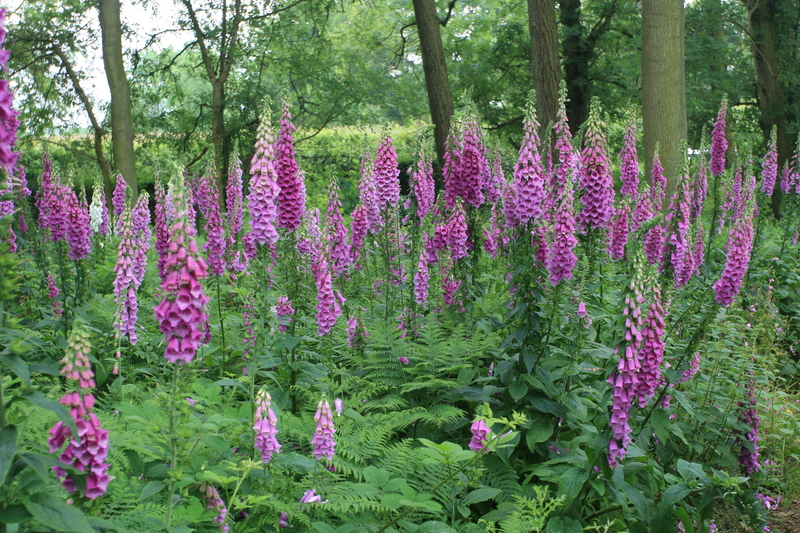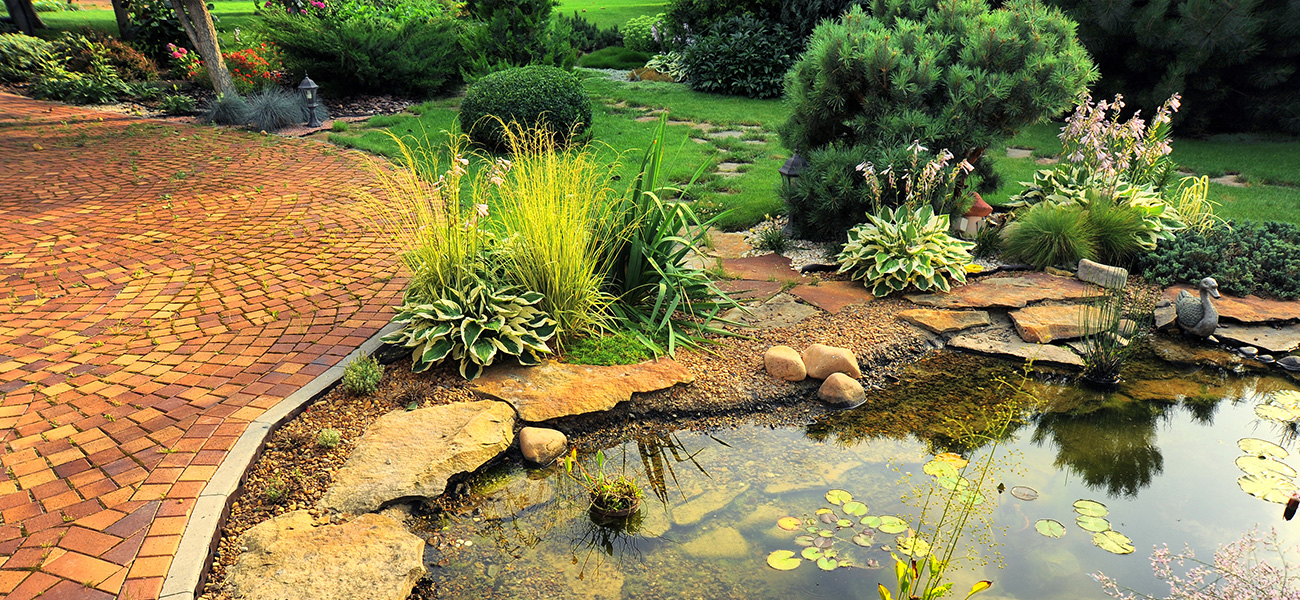The Ins and Outs of Container Gardening Revealed
Posted on 28/06/2025
The Ins and Outs of Container Gardening Revealed
Container gardening is a flexible, accessible, and creative approach to growing plants, offering gardeners the opportunity to cultivate lush greenery or an abundant harvest, even with limited space. In this comprehensive guide, "The Ins and Outs of Container Gardening Revealed," you'll discover expert tips, essential techniques, and a deep dive into the many varieties and possibilities of container planting. Whether you're a beginner or a seasoned green thumb, there's something here for everyone to help you get the best out of your container gardens.
What is Container Gardening?
Container gardening, also referred to as pot gardening or planting in pots, is the practice of growing plants in containers instead of planting them directly in the ground. These containers may vary from clay pots, plastic planters, hanging baskets, to even recycled buckets and wooden crates.
By mastering the fundamentals of container planting, anyone can create a vibrant garden on a balcony, patio, rooftop, windowsill, or even indoors. The options are virtually limitless, allowing for diverse plant combinations and creative arrangements.
But what truly sets this gardening style apart?

Benefits of Container Gardening
- Space Efficiency: Suitable for those with limited space--ideal for urban dwellers and apartment residents.
- Mobility: Move containers easily to optimize sunlight, or reposition for aesthetics or seasonality.
- Flexibility: Grow a mix of flowers, vegetables, herbs, or even small fruit trees in tailored soil conditions.
- Control: Better pest management, soil quality, and moisture regulation compared to traditional gardening.
- Accessibility: Raised containers reduce bending and make gardening easier for people with mobility issues.
Choose the Right Container for Your Garden
The choice of the container itself plays a crucial role in the success of your container garden. Let's explore some vital considerations for choosing planters and pots:
Container Material Matters
- Clay or Terracotta: Porous, encourages proper root aeration. Can dry out quickly; best for drought-tolerant plants.
- Plastic: Lightweight, retains moisture longer, affordable, and available in many styles.
- Ceramic/Glazed Pots: Attractive and durable, but heavy and may need proper drainage holes.
- Wooden Planters: Rustic look, generally good insulators, but may rot over time if not treated.
- Metal Containers: Very durable, but can overheat or get too cold quickly--insulate as necessary.
Size and Drainage Are Crucial
Your container size should accommodate the mature plant's root system. A pot that's too small restricts growth, while an excessively large one can lead to waterlogged roots.
Drainage holes at the base are essential for preventing root rot and keeping your plants healthy. Place a saucer underneath if used indoors to catch excess water.
Best Soil Mixes for Container Gardens
Unlike garden soil, container gardening soil needs to be lightweight, nutrient-rich, and well-draining. Garden soil alone tends to compact and can carry pests or diseases. Instead, use a commercial potting mix or your own blend:
- Potting Mix: Often contains peat moss, vermiculite or perlite, and compost for moisture retention and aeration.
- Custom Blend: Combine 50% peat moss or coconut coir, 25% compost, 25% perlite/vermiculite for a well-balanced medium.
- Slow-Release Fertilizer: Mix in granules or use compost to ensure ongoing nutrition.
Plants That Thrive in Containers
Container gardening plants range from showy flowers to productive vegetables. Here are popular choices:
Ornamental Plants
- Petunias, Geraniums, and Begonias: Provide seasonal color and are easy to manage.
- Pansies and Violas: Thrive in cooler weather.
- Succulents and Cacti: Require little water and love well-drained soil.
Edible Plants
- Tomatoes and Peppers: Popular for their yield and adaptability.
- Lettuce, Spinach, and Arugula: Fast-growing greens for constant harvesting.
- Herbs: Basil, parsley, chives, and mint love containers--keep them close for easy harvesting.
- Dwarf Fruit Trees: Try citrus or figs in large tubs for a unique edible focal point.
How to Start a Container Garden: Step-by-Step
- Select Your Location: Find a spot with the right amount of sunlight for your chosen plants. Most vegetables and flowers need 6-8 hours of direct light.
- Pick Your Containers: Choose based on plant type, style, and space. Make sure all have drainage holes.
- Add Soil Mix: Fill containers with pre-moistened potting mix up to an inch below the rim.
- Plant Your Selections: Arrange plants, considering mature size and spacing. Gently tease out roots before planting.
- Water Thoroughly: Moisten soil until water runs from the drainage holes. Be careful not to overwater.
- Place in Desired Location: Group containers for a lush look, or scatter for accents.
- Maintain Regular Care: Check for watering needs daily, fertilize every 2-4 weeks, and deadhead flowers for continuous blooming.
Watering and Feeding Containers
Smart Watering Techniques
Container soils dry quickly, especially in warm or windy spots. Check soil moisture daily by sticking your finger about an inch into the pot--water if it feels dry. Early morning is the best time to water.
- Self-watering containers help keep plants consistently hydrated.
- Mulch the soil surface with bark or pebbles to reduce evaporation.
- Always empty saucers after watering to prevent root rot.
Fertilizer and Nutrition
Container growing depletes nutrients faster than in-ground beds. Use:
- Liquid Fertilizer: Apply every 2-4 weeks for annuals and edibles, following directions for dilution.
- Organic Options: Compost tea or fish emulsion offer gentle, steady nutrition.
- Slow-release Granules: Apply at planting for long-lasting feeding.
Pest and Disease Management
While container gardening offers advantages over traditional garden beds, plants are still vulnerable to aphids, spider mites, slugs, and powdery mildew. Keep your pots healthy with these strategies:
- Inspect regularly: Look for signs of pests or disease each time you water.
- Isolate new plants: Quarantine for a week to make sure they're pest-free before incorporating them.
- Remove debris: Dead leaves and spent blooms encourage fungal issues; clean up often.
- Natural solutions: Neem oil, insecticidal soap, or homemade garlic sprays work for many common pests.
Design Tips for Beautiful Container Gardens
The Thriller, Filler, Spiller Technique
Create visually stunning containers by combining the following types of plants:
- Thriller: Eye-catching, tall plants (e.g., ornamental grass, canna lily)
- Filler: Bushy, mid-height plants to fill space (e.g., coleus, marigolds)
- Spiller: Trailing plants to drape elegantly (e.g., ivy, sweet potato vine)
Color and Texture
Mix foliage types--broad leaves, fine grasses, bold colors, and subtle variegation--for maximum interest. Group containers of varying sizes and heights to create depth and movement.
Common Challenges and How to Overcome Them
- Wilting Plants: Usually a sign of under- or over-watering; check drainage and soil moisture.
- Stunted Growth: Pot may be too small, or nutrients depleted. Transplant or fertilize as needed.
- Yellowing Leaves: Possible nutrient deficiency, overwatering, or pests.
- Rootbound Plants: If roots circle the pot and poke out the drainage holes, it's time to repot.
Container Gardening for Every Season
Spring and Summer
- Plant annuals, herbs, vegetables, and summer-blooming bulbs.
- Water and feed regularly during peak heat.
Fall and Winter
- Switch to autumn-flowering plants--mums, pansies, ornamental cabbages.
- Consider evergreen shrubs in pots for winter interest.
- Move tender plants indoors when frost threatens, or group containers together to provide warmth.

Frequently Asked Questions about Container Gardening
-
Can I use any container for gardening?
Technically yes, but it must have drainage holes and be safe for plants (no toxic residues). -
How often should I water container plants?
Check moisture daily; most containers need water every 1-2 days in hot weather, less frequently in cooler months. -
What is the best fertilizer for container gardens?
Use a balanced liquid or slow-release fertilizer, or organic options like compost, depending on plant type. -
Can vegetables grow well in containers?
Absolutely--many edibles thrive in pots, especially if they get enough sunlight and are in the right-sized container.
Conclusion: Why You Should Try Container Gardening
Container gardening truly offers a world of creative and horticultural possibilities, regardless of your space or experience level. By understanding the ins and outs--from selecting soil and choosing containers to ongoing maintenance--you can enjoy a lush, productive, and beautiful mini-garden anywhere you desire. Whether you dream of a balcony herb oasis, a riot of floral color at your doorstep, or fresh veggies within arm's reach, the versatility of container gardening makes it all possible.
As you embark on your own container gardening journey, experiment with different plants, arrangements, and locations to discover what thrives best in your unique environment. With a little practice, patience, and care, you'll master the art of container gardening--revealing new joys and rewards season after season.

